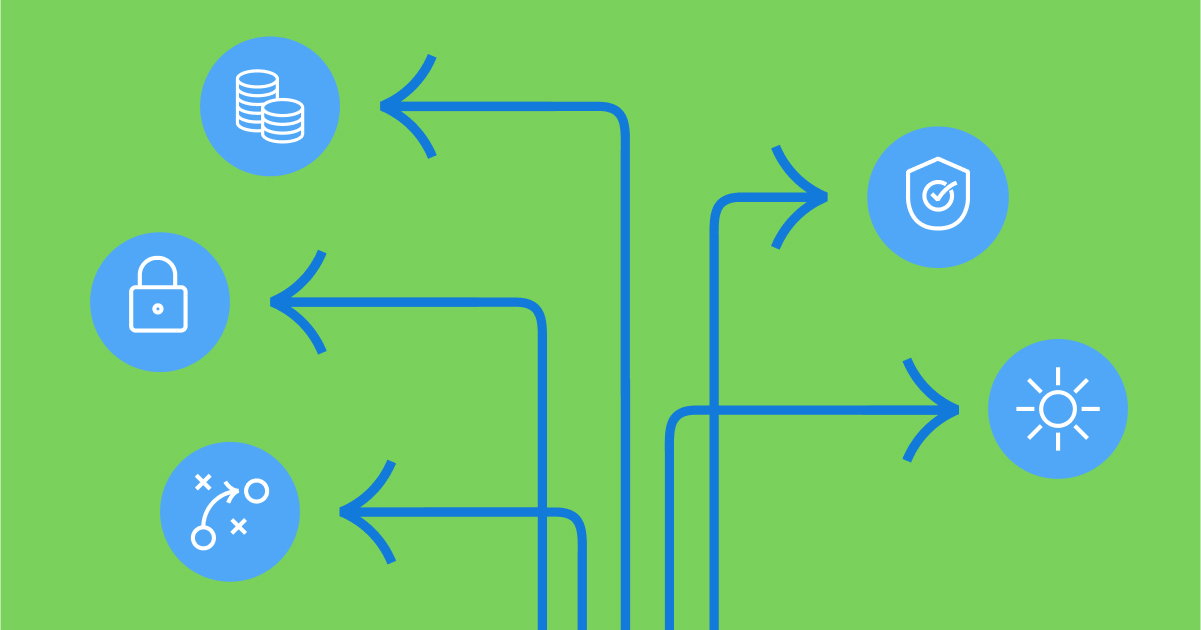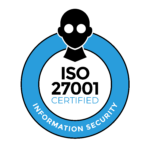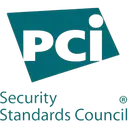Navigating the complexities of SOC 2 compliance can be challenging, especially when it comes to understanding the difference between SOC 2 Type 1 and Type 2. Simply put: Type 1 assesses the design of security processes at a single point in time, while SOC 2 Type 2 examines the operational effectiveness of those controls over a period of time.
For compliance and security leaders managing growing organizations, this distinction isn’t merely academic—it represents critical strategic decisions about resource allocation, audit timing, and security implementation.
Many organizations find themselves caught in cycles of inefficient evidence collection, unpredictable audit timelines, and redundant control documentation when navigating these frameworks. Modern compliance platforms are transforming this traditionally painful process, enabling organizations to streamline evidence collection, accelerate audit readiness, and build scalable compliance programs regardless of which SOC 2 approach they choose.
In this blog post, we’ll explore the distinct purposes of each type, the scenarios they’re suited for, and the benefits they provide, equipping you with the knowledge to decide which SOC 2 audit fits the needs of your service organization.
Key takeaways
- SOC 2 compliance is centered around five Trust Services Criteria (Security, Availability, Processing Integrity, Confidentiality, Privacy) and signifies an organization’s commitment to protect sensitive data, with SOC 2 Type 1 providing a snapshot of compliance at a specific time and SOC 2 Type 2 offering a more detailed, long-term assurance over a period of time.
- The choice between SOC 2 Type 1 and Type 2 depends on factors such as the organization’s specific needs, the sensitivity of the data, stakeholder requirements, and the pros and cons of each audit type. Type 1 offers a quicker and cost-effective approach for immediate proof of compliance, while Type 2 assesses control effectiveness over time.
- Preparing for SOC 2 audits involves assembling a specialized compliance team, understanding and implementing controls that meet relevant Trust Services Criteria, conducting a readiness assessment, and often engaging external support to ensure thorough preparation and adherence to necessary compliance standards.
- Organizations using a compliance automation platform like Thoropass can achieve up to 67% faster time-to-audit with a single source of truth for their security stance.
SOC 2 compliance: An overview and the five trust services criteria
SOC 2 compliance serves as a reliable indicator of a service organization’s dedication to maintaining a robust security posture within its systems. It establishes confidence among clients by confirming that the organization follows industry-recognized best practices and is fully equipped to handle their information securely, ensuring the safeguarding of customer interests and confidentiality.
The foundation of SOC 2 compliance lies in adhering to five critical Trust Services Criteria, also referred to as Trust Service Principles.
- Security
- Availability
- Processing integrity
- Confidentiality
- Privacy
These principles are crucial in upholding secure system operations that involve handling customer data effectively—ensuring its accuracy, availability when needed, confidentiality against unauthorized disclosure, and privacy for personal information held by organizations or systems responsible for managing such info with care at all times without failure (processing integrity).

1. Security
The security principle is essential for protecting systems from unauthorized access, preventing potential breaches and misuse. To maintain robust protection, service organizations implement a variety of security controls, including:
- Access controls
- Encryption techniques
- Firewall deployment
- Intrusion detection mechanisms
- Continuous security monitoring procedures
- User authentication protocols
Important note: Security is the only required Trust Services Criteria in any SOC audit because it not only sets overarching security standards for your company, but also overlaps with the others—setting security controls for availability, confidentiality, privacy, and processing integrity.
2. Availability
Availability ensures that your service organization’s system is up and running, and accessible to customers at the times they need them most. For example, Service Level Agreements (SLAs) with your customers are a great way to show you are able and committed to meet uptime requirements. It’s a key criterion for startups that need to guarantee their users can access data and services during critical moments.
3. Processing integrity
Processing integrity ensures the accuracy and completeness of data processing, managing the prompt detection and resolution of any processing errors. It safeguards against unauthorized changes to data during its input, storage, and output, thus guaranteeing that operations are conducted correctly and securely for user entities internal control.
4. Confidentiality
Confidentiality pertains to the management and safeguarding of sensitive information, whether it’s personal data or proprietary business details like strategic plans, financial reporting records, or legal contracts, that an organization is required to keep secure.
Beyond the security measures already mentioned, the confidentiality principle provides a framework for identifying sensitive information, ensuring its protection during use, and securely disposing of it when it’s no longer needed.
5. Privacy
Privacy involves the responsible management of personal data, such as individuals’ names, addresses, emails, Social Security numbers, or other identifiers, purchase records, and even criminal backgrounds.
While privacy focuses on the protection of customers’ personal data, confidentiality extends to safeguarding any sensitive information that an organization has committed to keeping confidential.
SOC 2 Type 1: A snapshot of compliance
Think of SOC 2 Type 1 as a snapshot that captures your company’s adherence to security controls at one point in time. It offers immediate visibility into how well your firm safeguards sensitive data, providing startups and established businesses alike with critical leverage for gaining market advantage or sealing prompt business agreements. It also allows you to evaluate the design of the controls you plan to implement—consider it like a blueprint.
Offering expedited assessment turnaround and affordability, the quicker-to-achieve and less expensive SOC 2 Type I certification works well for most service organizations—particularly when swift verification is imperative for pressing business engagements.
The SOC 2 Type 1 audit process
The SOC 2 Type 1 audit process requires the involvement of independent certified public accountants to validate adherence to established auditing standards and ensure auditor neutrality. It is crucial to select an AICPA-accredited auditor with proven expertise in conducting SOC 2 audits for this purpose.
During the audit, evaluators examine both the implementation and the design and operating effectiveness of a service organization’s controls as they pertain to a single moment in time. They assess if these controls are correctly structured to satisfy the relevant Trust Services Criteria and whether their operation was effective on a predetermined date. The primary objective is delivering confidence to stakeholders regarding the adequacy of control designs within the organization for meeting targeted criteria at that particular point in time.
Advantages of Type 1
SOC 2 Type 1 offers multiple benefits, being an economical and quicker alternative to a SOC 2 Type 2 audit. This makes it particularly suitable for businesses that have recently updated their data security posture or are newly established, allowing them to showcase compliance efficiently when time is of the essence.
SOC 2 Type 1 can quickly instill confidence in potential customers regarding an organization’s commitment to protect sensitive data. It stands out as an effective interim measure by offering faster auditing processes and reduced costs while addressing immediate client requirements for initial compliance validation.
“We’ve achieved a 400% ROI on our contract with Thoropass through retaining enterprise customers, and also about a 70% time-saving when it comes to answering all the questions that the auditors need to know.”
Lawrence Wagerfield
Founder and CEO
Bytescale
SOC 2 Type 2: Testing operating effectiveness over time
In contrast to SOC 2 Type 1, which is more akin to a momentary assessment, SOC 2 Type 2 offers an intricate evaluation of how well an organization’s security controls function over time. An annual review culminating in a SOC 2 Type 2 report is often recognized as the gold standard and provides robust assurance about an entity’s compliance measures regarding the effectiveness of their internal controls over a period of time.
SOC 2 Type 2 audit process
In contrast to Type 1, a SOC 2 Type 2 audit focuses on an extended timeframe with the observation period lasting about 6 months. Usually, a Type 2 audit assesses your compliance over a six to 12-month review period. In this way, the audit period grants auditors enough time to thoroughly assess how consistently effective security controls are over several months—offering a more in-depth insight into organizational compliance.
The steps undertaken throughout this auditing process include:
- Deciding upon which Trust Services Criteria will be assessed
- Identifying all pertinent systems and their associated security controls
- Collecting comprehensive documentation related to these controls
- The auditor conducts evaluations and requests substantiation regarding control implementation from said organization. They may also ask for additional documents or clarification if needed
- A detailed SOC 2 report is then furnished at the completion stage
- Finally, any identified exceptions or issues can be attended to by the organization once they receive feedback post-audit
It’s worth noting that service organizations may need to allocate more resources and personnel to support the Type 2 audit process and ensure that your controls are maintained and monitored throughout the audit period.
Advantages of Type 2
By assessing controls over a standard duration of 12 months, the SOC 2 Type 2 report offers assurance that an organization maintains compliance in the long term. This type of extended evaluation underscores a company’s dedication to upholding stringent security protocols continuously.

Continued Reading
SOC 2 as a business advantage
Understand how to leverage SOC 2 to build trust, open new markets, and scale your business
Type 2 reports further boost stakeholder trust by delivering a thorough and prolonged assessment of the entity’s controls. As with type 1, external assistance for audit preparation is crucial for achieving this unblemished level of compliance with SOC 2 Type standards, which in turn simplifies due diligence processes and strengthens confidence among stakeholders.
Getting your SOC 2 report can be a very manual and painstakingly slow process; however, there are SOC 2 compliance automation providers to help streamline the process. Thoropass is the only solution of its kind to offer both SOC 2 readiness and the audit, all from within an easy-to-use platform, enabling organizations to achieve up to 67% faster time-to-audit on average. Thoropass’ clients typically start with a Type 1 and then build to a Type 2 unless a specific client requires a Type 2 immediately.
Choosing between Type 1 and Type 2
Determining which SOC 2 type to pursue, whether Type 1 or Type 2, isn’t an easy choice and should be influenced by multiple considerations such as the needs of your organization, how sensitive the data is that you’re handling, and what exactly your clients or partners demand.
In general, most businesses should start with a Type 1 and then build to a Type 2, unless a specific client requires a Type 2 immediately. However, the type of report can depend on how urgently businesses need compliance, and if they will eventually need a Type 2 report.
When deciding between achieving Type 1 and Type 2, consider factors like time constraints, budgetary limits, and the level of detail desired in evaluating the effectiveness of controls.
New ventures targeting enterprise-level clientele might find that a SOC 2 Type 1 certification meets certain client demands due to its quicker turnaround time and lower associated costs. For those enterprises demanding thorough evidence of sustained compliance over time, it will likely require attaining a SOC 2 Type 2 certification.
For organizations juggling multiple compliance frameworks, streamlining the process becomes even more critical. With a comprehensive platform like Thoropass, 100% of your SOC 2 security stance can be managed in one platform, significantly reducing the complexity of maintaining multiple frameworks simultaneously.
Not sure if SOC 2 is right for your business? Take our compliance quiz to find out.
Conducting a readiness assessment
Before pursuing either type of SOC 2 report, organizations should conduct a thorough readiness assessment to evaluate their current security stance. This essential step helps identify gaps in controls and processes that need addressing before an audit.
A proper readiness assessment will:
- Evaluate current controls against required Trust Services Criteria
- Identify documentation gaps and policy needs
- Assess technology infrastructure and security tools
- Review access management processes
- Determine staff training requirements
With platforms like Thoropass, organizations can efficiently manage the readiness assessment process through automated controls mapping and gap analysis, significantly reducing the preparation time before formal audits begin.
“Generally, a SOC audit could have taken us 12 months from beginning to end, and now we’re probably doing it in six or seven months. From a business perspective on the economics aspect, a minus 25% reduction of costs. I can scale, so I don’t need to add resources to my team.”
Matt Steel
Head of GRC
Access Group
Transitioning from Type 1 to Type 2
Transitioning from SOC 2 Type 1 to SOC 2 Type 2 is a significant step in the compliance trajectory of any organization. Initially, entities venturing into their inaugural SOC 2 audit are encouraged to commence with a SOC 2 Type 1 report. This serves as an essential foundation that paves the way towards achieving type two conformity.
Advancing to a Type 2 classification affirms your organization’s unwavering adherence to robust security controls but also demonstrates this over an extended timeframe. Thoropass’ clients typically start with a Type 1 and then build to a Type 2 unless a specific client requires a Type 2 immediately.
Multi-framework complexity: Beyond SOC 2
For many organizations, SOC 2 compliance is just one aspect of a broader compliance strategy that may include ISO 27001, HIPAA, GDPR, and other frameworks. Managing multiple frameworks simultaneously presents significant challenges:
- Overlapping control requirements
- Inconsistent audit timelines
- Duplicative evidence collection processes
- Multiple audit firms with different methodologies
“If you have the SOC 2 and ISO certifications, you just upload them and off you go. You don’t need to answer anything else. I would estimate 75% of my time is saved”
Ryan Hyllestad
Director of Information Technology
CoEnterprise
Conclusion: Compliance requires ongoing dedication
In our ever-increasingly digital world, ensuring the security and privacy of sensitive customer data is imperative for any service organization. Achieving SOC 2 compliance signifies to customers and stakeholders that a company is dedicated to implementing best practices in safeguarding their information. It’s important for an organization to understand the differences between SOC 2 Type 1 and Type 2 audits in order to select the appropriate type that aligns with its operational requirements.
Keep in mind that achieving compliance isn’t just about reaching an endpoint. It involves ongoing dedication and improvement. Throughout your progression toward obtaining SOC 2 compliance, aim beyond simply acquiring a favorable audit report—strive instead for establishing durable systems of data protection designed to be enduringly secure against future challenges.
With a comprehensive compliance platform like Thoropass, organizations can manage 100% of their SOC 2 security stance in one platform, streamlining the evidence collection, monitoring, and audit processes while reducing time-to-audit by up to 67%.
More FAQs
What is the difference between SOC 2 Type 1 and SOC 2 Type 2?
There are two different types of SOC reports:
- A SOC 2 Type 1 (Type I report) audit tests the design of your compliance program. It assesses your compliance at one point in time. Typically, this involves checking to see that you’ve identified and documented the controls you have in place, as well as providing sufficient evidence that your controls are functional at that point in time.
- A SOC 2 Type 2 (Type II report), on the other hand, tests not only your compliance program but also the operating effectiveness of controls over time. Usually, a Type 2 audit assesses your compliance over a six to 12-month review period, with your first audit typically lasting up to six months.
(Check out our detailed blog on SOC 2 Type 2)
What are the similarities between SOC 2 Type I and SOC 2 Type II?
Both audited by a licensed CPA firm, SOC 2 Type 1 and Type 2 provide customers and third-party vendors with reasonable assurance that the service provider meets control objectives against the chosen trust services criteria– availability, confidentiality, security, privacy, and processing integrity.
Not only can you trust that the business you are working with complies with industry standards, but also that the business is appropriately protecting sensitive, personal information.
How does a service organization decide what type of report they need?
Businesses should start with a Type 1 and then build to a Type 2, unless a specific client requires a Type 2 immediately. However, the type of report can depend on how urgently businesses need compliance, and if they will eventually need a Type 2 report.
If an organization needs a SOC 2 report as soon as possible, it might be enough to begin with a Type 1 audit. Type 1 audits are faster and can set realistic expectations for a Type 2 audit report.
A Type 2 audit is more comprehensive and shows a greater level of audit assurance. Although it covers the same controls as Type 1, Type 2 audits go further in-depth on the design and operating effectiveness of the controls with evidence. The results of SOC 2 Type 2 are more indicative of how securely the organization operates.
Which is better for startups selling into the enterprise, SOC 2 Type 1 or SOC 2 Type 2?
Each type comes with its own benefits and challenges. Type 1 is faster and cheaper than Type 2. The requirements aren’t as strict as Type 2, since Type 1 tests the suitability of the design of controls and does not require evidence. Type 2, however, points to a higher level of compliance.
Type 1 is enough for some enterprise customers, making it a sufficient option for some startups. That is until SaaS startups want to work with enterprise customers that require a more complete picture of their compliance. In that case, you’ll want to pursue SOC 2 Type 2.
When should you obtain a Type 1 vs Type 2 SOC report?
Generally, businesses should explore both SOC 2 reports as soon as possible. The attestations can be customized to the current stage of your business (pre-seed, seed, series A, etc), and made to change as the business evolves. (See: Why Stage-Appropriate Compliance Matters for Startup Growth). As your company grows, so will the need for information security to protect sensitive data against unauthorized access.
At the minimum, we recommend seed companies upgrade their internal controls and series A companies implement SOC 2 Type 1, tighten people management controls, and prepare business continuity plans. You might even need to start a SOC 2 Type 1 earlier if you sell to financial institutions or healthcare organizations.
Which SOC report can you get faster and cheaper?
As with many important and complicated things, the answer is — it depends. The deciding factor here is complexity. How many employees work for your startup? How many systems do you run? Do you have multiple locations? What’s your startup’s revenue like? How sensitive is your customer data? It can also hinge on whether or not you choose to use a SOC 2 compliance automation software and its level of sophistication.
In a best-case scenario, a SOC 2 Type 1 audit can cost anywhere from $10,000 to $30,000 and can take as quickly as 2-4 weeks to draft, and then another 2-4 weeks for the audit. A SOC 2 Type 2 audit can cost roughly $30,000, and take anywhere from 2-6 weeks to draft, 6 to 12 months to collect evidence, and 4 to 6 weeks for the audit.
However, in both scenarios, businesses usually spend much more time preparing for the audit. Organizations that leverage compliance automation platforms like Thoropass can achieve up to 67% faster time-to-audit on average while managing 100% of their SOC 2 security stance in one comprehensive platform.
RECOMMENDED FOR YOU
Compliance isn’t just required—it’s good business
With our guide to SOC 2 as a business accelerator, find out how you can better leverage compliance in your growth strategy.

Related Posts
Stay connected
Subscribe to receive new blog articles and updates from Thoropass in your inbox.
Want to join our team?
Help Thoropass ensure that compliance never gets in the way of innovation.















.png)